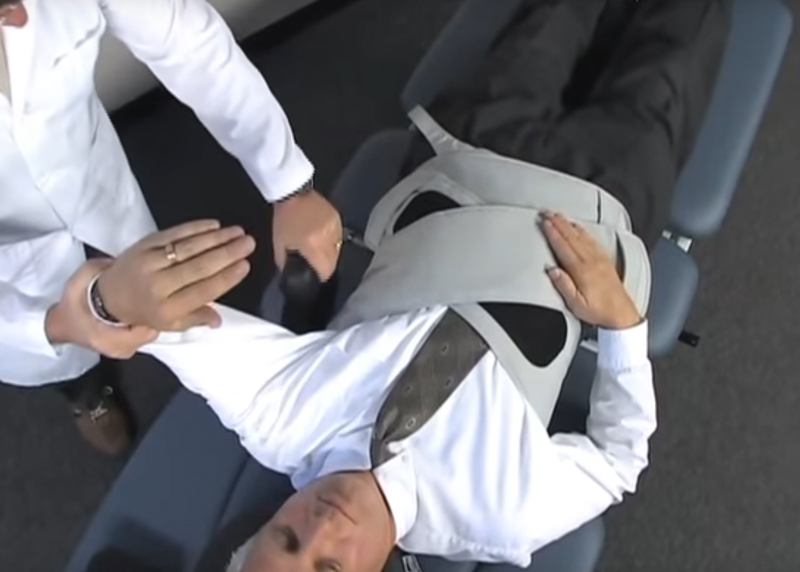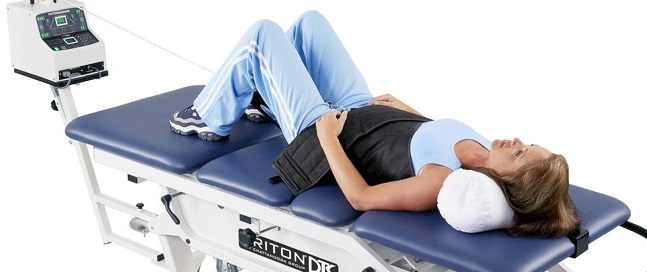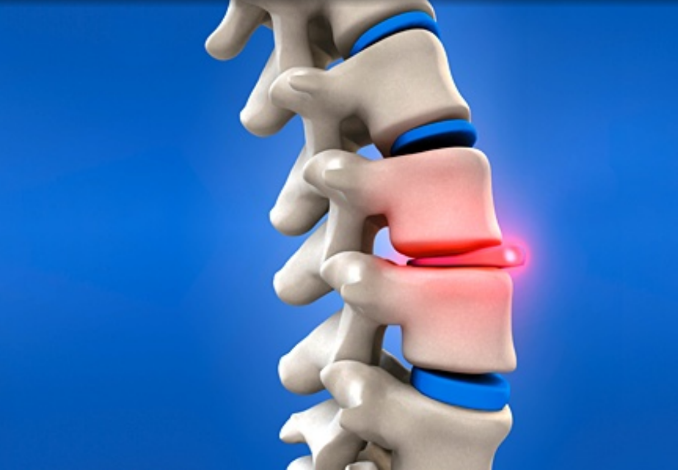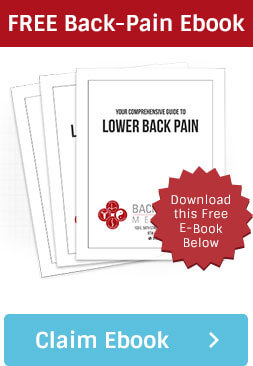Spinal Decompression at Back & Body Medical, Manhattan
At Back & Body Medical, we have many treatment options and therapies available for neck & back pain. From chiropractic to physical therapy to acupuncture to massage. Many of these therapies work well for the majority of cases.
In the US, back pain is one of the most common conditions people face. It’s a leading reason why so many patients visit their doctors every year. In fact over 10% of doctor visits are due to back pain related issues culminating in approximately $86 billion spent in health care costs each year.
Around a quarter to two thirds of those patients will likely report a recurrence of that pain within a year. It’s the most common reason so many days are lost from work each year and many who are out for 6 months or more will not return.
Across the globe to Australia, the condition is increasing quicker than any other. The condition affects more than 1.9 million Australians each year, costing the economy some $10 billion.
What is Spinal Decompression?
While there are many treatment options for back and neck pain (and you can see them here), Spinal Decompression is a great option.
Spinal Decompression is a computer aided machine that is ideal for treating back and neck pain. It is FDA cleared and has been in use for over a decade.
Spinal Decompression is becoming a great alternative to surgery, and is a go to treatment if other conservative options have not had the desired effect. So if chiropractic, physical therapy, pain injections, medication and acupuncture have not worked, then spinal decompression is a good option.
Studies have seen many patients find relief from their pain after 4 to 6 weeks of the treatment showing it is a viable option after other treatments have failed.
What Does Spinal Decompression Treat?
The most common conditions that spinal decompression treats includes:
- Herniated Discs
- Bulging Discs
- Pinched Nerves
- Sciatica (leg pain) Degenerative Discs
- Spinal Stenosis
- Post-Surgical Pain and more…
How Does it Work?
The patient is laid flat on a bed and strapped in. The machine is able to provide a range of gentle traction therapies which pull the patients spine at various angles. This traction causes decompression and a negative pressure builds within the joints and spinal cord. This negative pressure sucks back any bulging or herniated discs back into their proper position, meaning the disc no longer infringes upon any nerves.
Moreover, some experts also believe that oxygen, nutrients and other fluids flow down to the area which help to improve the healing process and reduce pain.
The doctor will determine the appropriate settings or protocols based on a variety of variables including patient condition, weight, pain level tolerance and more. This will help ensure proper results.
Does it Hurt? What Happens?
The patient is fitted with a special harness and laid flat on the machine bed. This harness will enable the machine to very gently and slightly lengthen your spine.
This gentle lengthening enables the negative pressure to occur as previously described and allow your disc to slip back into position.
The treatment is safe and can be quite relaxing. Depending on severity, the first couple of sessions may see a little discomfort, but it isn’t unusual to see patients fall asleep during treatment. As treatment progresses, this discomfort soon dissipates.
There is also a safety switch that the patient can press if they feel too much discomfort.
The average length of treatment is around 20 sessions over a 4 to 6 week period, and each session lasts up to 15 minutes.

What is the Typical Treatment Length?
Depending on your condition it could be as many as 25 sessions, or as little as 20. The treatment period lasts between 4 to 6 weeks.
Most patients say they can see a difference in pain after their first few visits and most claim they have significant pain loss over the entire duration of treatment.
How Successful is Spinal Decompression?
Research and studies are continuous. Currently the figures are from 71% to 89% success. This is measured by taking the patient’s initial pain level rating of 6 out of 10 or more to a pain level rating of 3 out of 10 or less.
It is clearly a very successful option for treatment and one that may eliminate the need for surgery.
Case studies of Spinal Decompression Therapy:
STUDY:
John Leslie M.D. and the Mayo Clinic 18th Annual Meeting American Academy of Pain Management, Tampa Fl Sept. 5 2007. Multi-center, phase II, non-randomized pilot study utilizing spinal decompression. Designed to evaluate the effectiveness and safety of spinal decompression in the treatment of chronic lower back pain.
OUTCOME:
Patients enrolled – average of ten years of chronic back pain.
After two weeks of treatments of spinal decompression- 50% reduction in pain scores. Upon completion of the entire six week protocol success rate of
88.9% was documented.STUDY:
Norman Shealy CN, Koladia N, Wesemann, M. American Journal of Pain Management. Long-term effect analysis of IDD therapy in low back pain: a retrospective clinical pilot study. July 2005;75,(3).
OUTCOME:
Of 24 study participants, each reported consistent pain relief and continual improvement of symptoms one year later. Improvement in pain continued after the treatment sessions were completed.
STUDY:
Shealy, CN. Practical pain management: technology review. IDD Therapy. April 2005;5(3).
OUTCOME:
The treatment leads to satisfactory pain relief and improved quality of life in up to 88% of patients, many of whom have failed other “conventional” approaches. Based on the author’s review of recent study results, IDD Therapy ‘”appears to be the current optimal recommendation for most lumbar pain syndromes.
STUDY:
Eyerman E. MRI evidence of nonsurgical, mechanical reduction, rehydration and repair of the herniated lumbar disc. Journal of Neuroimaging. April 1998;8(2).
OUTCOME:
All but 3 of 20 patients reported significant pain relief and complete relief of weakness and immobility, when present. This study also shows a correlation between the improvement on the MRI and the reported improvement in pain.
STUDY:
Gose, et al.Vertebral axial decompression therapy for pain associated with herniated discs, degenerated discs, or facet syndrome. Journal of Neurological Research. April 1998.
OUTCOME:
778 cases
Average time between the initial onset of symptoms and beginning of treatment was 40 months
Data was collected from 22 medical centers in the USA
Pain was rated on a scale from 0-5 with severe pain being 5
Average was 4.2; Success was considered 0-1
Overall the treatment was successful 71% of the timeSTUDY:
Gionis T,Groteke E.D. Orthopedic Technology Review. Decompression using DRX 9000. November 2003.
OUTCOME:
219 patients with herniated discs and degenerative disc disease 86% showed improvement and resolution of their symptoms 92 % showed improvement overall
2 % relapsed within 90 daysThe Effects of Spinal Decompression are here to Stay
Another important question is not only how successful the therapy is, but also does it last? Are repeat procedures necessary?
Several studies and research have shown that there is a long lasting success of the therapy.
For example, “The Treatment of 100 Cases With Articulating Traction Decompression & Specific Patient Posturing Including 12 Month Follow-up” article reported that 95% of a study group had complete or a great reduction of pain reduction. Only 2% actually required surgery.
SUMMARY
Spinal Decompression Therapy helps the following conditions:
- Herniated discs
- Degenerated discs
- Torn Annulus
- Sciatica
- Spinal Stenosis
Key elements of the therapy
- Safe and painless
- Takes around 8-15 minutes per session
- Average of 20-25 sessions
- 71% to 89% success rate

How We Can Help You!
Is Spinal Decompression Therapy Right for You??
Answer these questions and see if you could be a candidate for the therapy.
Are you suffering from neck or back pain?
Is your condition hindering work, your social life and from leading the life you want to lead?
Have you tried other forms of therapy such as chiropractic, physical therapy, acupuncture, massage, pain killers or more that have all failed to give you the relief you want?
Do you have a diagnosis of bulging disc, herniations, sciatica or the like?
Note: Spinal decompression therapy may not be right for you if:
You have had surgery or spinal fusion at the pain point.
Suffered with cancer which has spread to your spine or bones.
Are currently pregnant.
As with many other therapies, spinal decompression therapy is not for everyone. Before we provide any treatment of any kind we always perform an examination to determine your condition. If we feel any of our therapies will not help you, we will refer you out to an appropriate physician to help you. Your condition is our primary concern.
Why Choose Back & Body Medical?
Our expertise and knowledge coupled with our collaborative care approach helps us to provide the most tailor made, appropriate care for your condition.
As well as spinal decompression, we can offer other therapies including chiropractic and physical therapy. A collaborative approach of spinal decompression and other therapies can help accelerate your healing process, thereby reducing your pain and helping you back to a normal life sooner rather than later.
- We currently have over 170 Google 5 Star reviews.
- High patient outcome rates
- We work with insurance on many therapies
- State of the art medical center and equipment
- Decades of collaborative experience and knowledge
If you have any additional questions about spinal decompression therapy in New York City to treat back and neck pain caused by disc bulges, disc herniations, degenerative disc disease, sciatica, bulging discs, arthritis of the spine or about chiropractic care in NYC, please feel free to contact us.


















